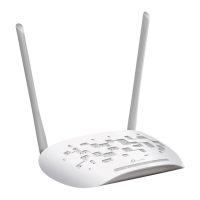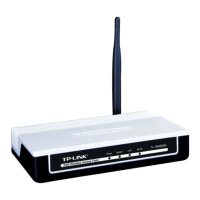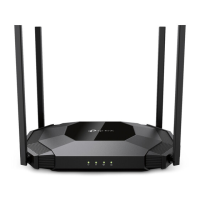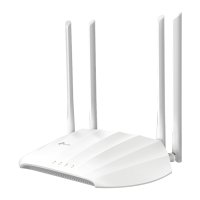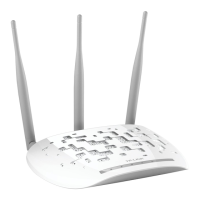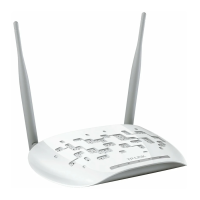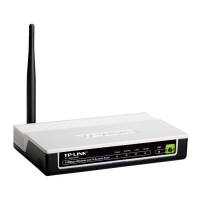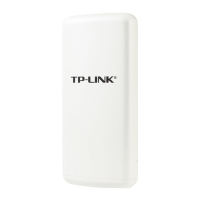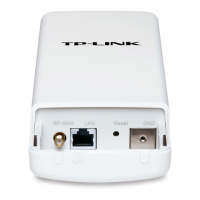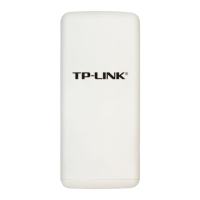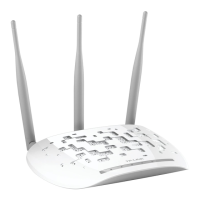Do you have a question about the TP-Link TL-WA601G and is the answer not in the manual?
Provides a general overview of the wireless access point and its capabilities.
Lists the key features and standards supported by the TL-WA601G.
Explains terminology and conventions used within the user guide.
Describes the front panel of the TL-WA601G, including its indicators.
Details the meaning of each LED indicator on the front panel.
Describes the back panel of the TL-WA601G, including ports and buttons.
Lists the necessary hardware and software for using the TL-WA601G.
Specifies the optimal environmental conditions for installing the access point.
Provides step-by-step instructions for connecting the TL-WA601G to a network.
Guides users on how to configure a PC to work with the TL-WA601G.
Explains how to access and log into the TL-WA601G's web-based utility.
Describes how to view the current status and configuration of the access point.
Details how to configure network settings, including IP address and subnet mask.
Covers essential wireless settings like SSID, Channel, and operating mode.
Explains how to scan for and view nearby wireless access points.
Guides users on setting up wireless security using WEP or WPA/WPA2.
Details how to control wireless access based on MAC addresses.
Displays statistics for connected wireless stations.
Introduces DHCP settings for automatic IP address assignment.
Explains how to configure the DHCP server settings on the access point.
Shows a list of devices that have received IP addresses from the DHCP server.
Allows reserving specific IP addresses for certain MAC addresses.
Covers advanced wireless configuration parameters like RTS threshold.
Introduces system management tools for the access point.
Guides on how to upgrade the access point's firmware.
Explains how to restore the access point to its default factory settings.
Describes how to reboot the access point system.
Details how to change the access point's login username and password.
Explains how to view system logs for troubleshooting.
Lists general technical specifications like standards, protocols, and ports.
Details wireless-specific specifications such as data rates and WEP.
Covers physical dimensions and environmental operating conditions.
Troubleshooting steps for when the access point has no power indicators.
Troubleshooting steps for issues with the LAN port indicator light.
Guidance on resolving problems accessing the access point wirelessly.
Provides a general overview of the wireless access point and its capabilities.
Lists the key features and standards supported by the TL-WA601G.
Explains terminology and conventions used within the user guide.
Describes the front panel of the TL-WA601G, including its indicators.
Details the meaning of each LED indicator on the front panel.
Describes the back panel of the TL-WA601G, including ports and buttons.
Lists the necessary hardware and software for using the TL-WA601G.
Specifies the optimal environmental conditions for installing the access point.
Provides step-by-step instructions for connecting the TL-WA601G to a network.
Guides users on how to configure a PC to work with the TL-WA601G.
Explains how to access and log into the TL-WA601G's web-based utility.
Describes how to view the current status and configuration of the access point.
Details how to configure network settings, including IP address and subnet mask.
Covers essential wireless settings like SSID, Channel, and operating mode.
Explains how to scan for and view nearby wireless access points.
Guides users on setting up wireless security using WEP or WPA/WPA2.
Details how to control wireless access based on MAC addresses.
Displays statistics for connected wireless stations.
Introduces DHCP settings for automatic IP address assignment.
Explains how to configure the DHCP server settings on the access point.
Shows a list of devices that have received IP addresses from the DHCP server.
Allows reserving specific IP addresses for certain MAC addresses.
Covers advanced wireless configuration parameters like RTS threshold.
Introduces system management tools for the access point.
Guides on how to upgrade the access point's firmware.
Explains how to restore the access point to its default factory settings.
Describes how to reboot the access point system.
Details how to change the access point's login username and password.
Explains how to view system logs for troubleshooting.
Lists general technical specifications like standards, protocols, and ports.
Details wireless-specific specifications such as data rates and WEP.
Covers physical dimensions and environmental operating conditions.
Troubleshooting steps for when the access point has no power indicators.
Troubleshooting steps for issues with the LAN port indicator light.
Guidance on resolving problems accessing the access point wirelessly.
| Brand | TP-Link |
|---|---|
| Model | TL-WA601G |
| Category | Wireless Access Point |
| Language | English |
